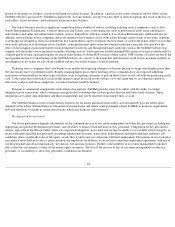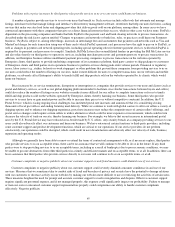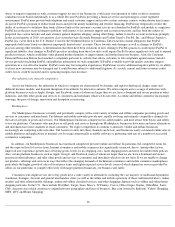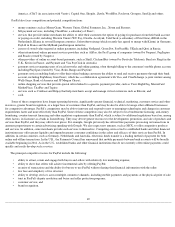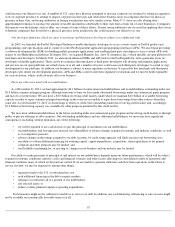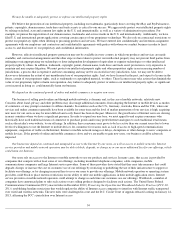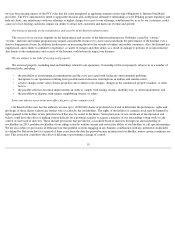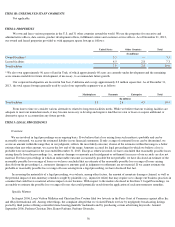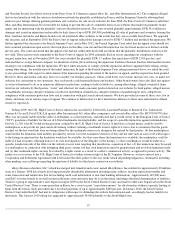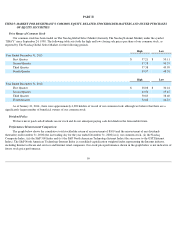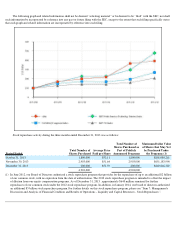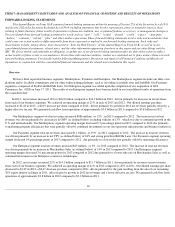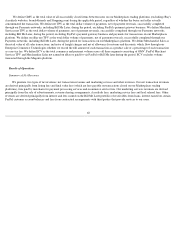eBay 2013 Annual Report Download - page 56
Download and view the complete annual report
Please find page 56 of the 2013 eBay annual report below. You can navigate through the pages in the report by either clicking on the pages listed below, or by using the keyword search tool below to find specific information within the annual report.
We may be unable to adequately protect or enforce our intellectual property rights.
We believe the protection of our intellectual property, including our trademarks (particularly those covering the eBay and PayPal names),
patents, copyrights, domain names, trade dress and trade secrets is critical to our success. We aggressively protect our intellectual property rights
by relying on federal, state and common law rights in the U.S. and internationally, as well as a variety of administrative procedures. For
example, we pursue the registration of our domain names, trademarks and service marks in the U.S. and internationally. Additionally, we have
filed U.S. and international patent applications covering certain aspects of our proprietary technology. We also rely on contractual restrictions to
protect our proprietary rights when offering or procuring products and services. We have entered into confidentiality and invention assignment
agreements with our employees and contractors and confidentiality agreements with parties with whom we conduct business in order to limit
access to, and disclosure of, our proprietary and confidential information.
However, effective intellectual property protection may not be available in every country in which our products and services are made
available, and contractual arrangements and the other steps we have taken to protect our intellectual property may not prevent third parties from
infringing or misappropriating our technology or deter independent development of equivalent or superior technologies or other intellectual
property rights by others. In addition, trademark, copyright, patent, domain name, trade dress and trade secret protection is very expensive to
maintain and may require litigation. We must protect our intellectual property rights and other proprietary rights in an increasing number of
jurisdictions, a process that is expensive and time consuming and may not be successful in every jurisdiction. Also, we may not be able to
discover or determine the extent of any unauthorized use of our proprietary rights. And, we have licensed in the past, and expect to license in the
future, certain of our proprietary rights, such as trademarks or copyrighted material, to others. These licensees may take actions that diminish the
value of our proprietary rights or harm our reputation. Any failure to adequately protect or enforce our intellectual property rights, or significant
costs incurred in doing so, could materially harm our business.
We depend on the continued growth of online and mobile commerce to acquire new users.
The business of selling goods online and through mobile networks is dynamic and, in the case of mobile networks, relatively new.
Concerns about fraud, privacy and other problems may discourage additional consumers from adopting the Internet or mobile devices as modes
of commerce, or may prompt consumers to offline channels. In countries such as the U.S., Germany, Australia, Korea and the U.K., where our
services and online commerce generally have been available for some time and the level of market penetration of our services is high, acquiring
new users for our services may be more difficult and costly than it has been in the past. Moreover, the growth rates of Internet users are slowing
in many countries where we have a significant presence. In order to expand our user base, we must appeal to and acquire consumers who
historically have used traditional means of commerce to purchase goods and/or may prefer Internet analogues to such traditional retail means,
such as the retailer's own website, to our offerings. In addition, these consumers may prove to be less active than our current users due to lower
levels of willingness to use the Internet or mobile devices for commerce for reasons such as, lack of access to high-speed communications
equipment, congestion of traffic on the Internet, Internet or mobile network outages or delays, disruptions or other damage to users' computers or
mobile devices. If the growth of online and mobile commerce slows and we are unable to gain new users, our business could be adversely
impacted.
Our businesses depend on continued and unimpeded access to the Internet by our users, as well as access to mobile networks. Internet
service providers and mobile network operators may be able to block, degrade, or charge us or our users additional fees for our offerings, which
could harm our business.
Our users rely on access to the Internet or mobile networks to use our products and services. In many cases, that access is provided by
companies that compete with at least some of our offerings, including incumbent telephone companies, cable companies, mobile
communications companies and large Internet service providers. Some of these providers have stated that they may take measures that could
degrade, disrupt, or increase the cost of customers' use of our offerings by restricting or prohibiting the use of their infrastructure to support or
facilitate our offerings, or by charging increased fees to us or our users to provide our offerings. Mobile network operators or operating system
providers could block or place onerous restrictions on our ability to offer our mobile applications in their mobile application stores. Internet
service providers or mobile network operators could attempt to charge us each time our customers use our offerings. Worldwide, a number of
companies have announced plans to take such actions or are selling products designed to facilitate such actions. The United States Federal
Communications Commission (FCC) enacted rules in December 2010 ( Preserving the Open Internet Broadband Industry Practices (FCC-10-
201) ) establishing baseline restrictions that would regulate the ability of Internet access companies to interfere with Internet traffic transported
over wired and wireless networks. The new rules were challenged in court and the D.C. Circuit Court of Appeals released a ruling on January 14,
2013, affirming the FCC’s jurisdiction over Internet access
54


